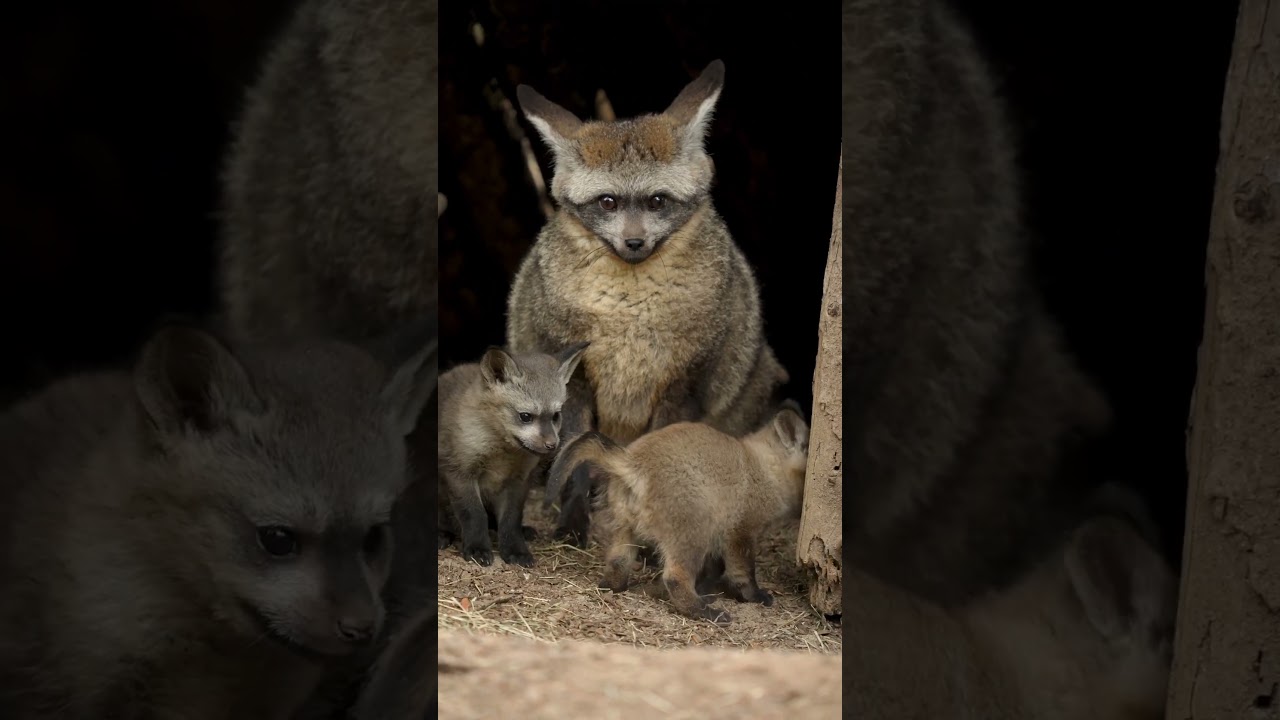Summary:
1. Introducing the San Diego Zoo Safari Park’s latest additions: three bat-eared fox kits!
2. Learn about the unique characteristics and behaviors of bat-eared foxes.
3. Discover the critical role bat-eared foxes play in their ecosystem.
4. See how the San Diego Zoo Safari Park provides care and enrichment for their new fox kits.
5. Explore the future possibilities for conserving bat-eared foxes and other wildlife.
The San Diego Zoo Safari Park has welcomed three new members to their animal family: adorable bat-eared fox kits! These cute and curious creatures are quickly capturing the hearts of visitors and online viewers alike. As a zoology expert, I am excited to share some fascinating facts about these unique mammals and their crucial role in our ecosystem.
Bat-eared foxes, scientific name Otocyon megalotis, are a small African species of fox that get their name from their giant ears (which are, as the name suggests, almost bat-like in appearance!). These ears are not just a charming feature – they also play a vital role in helping their owner detect prey. Bat-eared foxes specialize in eating insects, especially termites, which make up around 80% of their diet. They listen for the sounds of digging or munching termites, then use their long, sharp claws to dig them out of the soil.
But why specialize in termites? These tiny insects may not seem like a valuable food source compared to larger prey animals, but they provide essential nutrients for bat-eared foxes. Termites are rich in protein, fiber, and calcium – all essential for healthy growth and development. In the wild, bat-eared foxes are particularly important for regulating insect populations. Without them, termites could easily overpopulate and cause damage to vegetation and other ecosystems.
So what makes bat-eared foxes such unique and fascinating animals? In addition to their oversized ears, they have several other exciting features. For example, their teeth are specially adapted for crushing tough insect exoskeletons. They also have substantial cheek teeth that can grind through rigid plant material if food is scarce. These foxes are also highly social – they live in family groups that can include up to 15 individuals, many of whom play important roles in raising and caring for young kits.
Speaking of young kits, the San Diego Zoo Safari Park’s newest bat-eared foxes are currently receiving exceptional care and attention. The park’s animal care specialists provide a carefully tailored diet of insects, fruits, and veggies and fun and engaging enrichment activities to keep them mentally stimulated and physically active. For example, the kits might play with puzzle feeders or explore new objects in their habitat. These activities encourage natural behaviors like foraging, climbing, and digging and help the kits develop skills they will need in the future.
Overall, bat-eared foxes are an essential member of their ecosystem, and the San Diego Zoo Safari Park is doing excellent work in caring for and educating the public about these fascinating animals. They remind us of the incredible variety of life on our planet and the importance of protecting and conserving it for future generations. I hope this article has inspired you to learn more about bat-eared foxes and other incredible wildlife!
Don’t forget to visit the San Diego Zoo Safari Park’s social media accounts to stay updated on their animal ambassadors’ latest news and adventures. And if you’re lucky enough to have a chance to visit the park in person, be sure to say hello to the bat-eared foxes – they’re sure to steal your heart!
*****
Source Description
All ears for this news 👂: the San Diego Zoo Safari Park recently welcomed three bat-eared fox kits, which are too cute not to share.
Facebook – https://www.facebook.com/SanDiegoZoo/
Instagram – https://www.instagram.com/sandiegozoo/
Twitter – https://twitter.com/sandiegozoo
Giphy – https://giphy.com/sandiegozoo
TikTok – https://www.tiktok.com/@sandiegozoo
Twitch – https://www.twitch.tv/sandiegozoo


